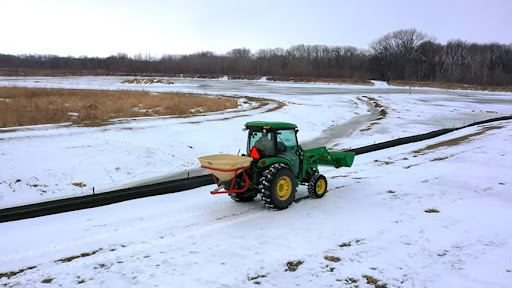
Farmers know managing land is a year-round endeavor, even during the cold winter months. Winter-like conditions leading to natural freeze and thaw cycles in many areas of the country provide a biological process for seed to work its way into the soil. That is why the winter months provide an ideal time for you to deploy a popular and economical seeding method for planting pollinator and monarch habitat. The method is called dormant seeding, sometimes referred to as frost seeding.
Dormant seeding uses a similar approach as other seeding methods. You still need to follow the best practices for planting like defining objectives, selecting a regionally appropriate seed mix, and proper site preparation. Site preparation includes ensuring that the seeds have good potential for soil contact. In fact, the only difference in dormant seeding is the timing; seeding is conducted when plants are not actively growing, typically mid-November to early March. Farmers for Monarchs has previously detailed how to best utilize dormant seeding.
Broadcast spreading is the most common and preferred method for dormant seeding, but drill seeding can also be used. USDA’s Natural Resources Conservation Service advises to use cyclone-type spreaders that mount onto ATVs or tractor 3-point hitches. A project out of Ivey Tech Community College in Indiana recently used an unmanned aerial vehicle (UAV), or drone, to conduct a dormant seeding of a pollinator habitat mix.
Farmers for Monarchs provides many resources and an abundance of information to aid you in this effort. The Bee & Butterfly Habitat Fund also includes information on dormant seeding on page in their Pollinator Habitat Establishment and Management Guide.
Call our Pollinator Habitat Help Desk at (337) 422-4828 (377-HABITAT) to help you navigate the many resources available to plant and maintain pollinator habitat. The Pollinator Habitat Help Desk is a free, farmer-facing resource uniquely positioned to support you with pointed and regionally appropriate guidance for pollinator habitat goals of any size.
